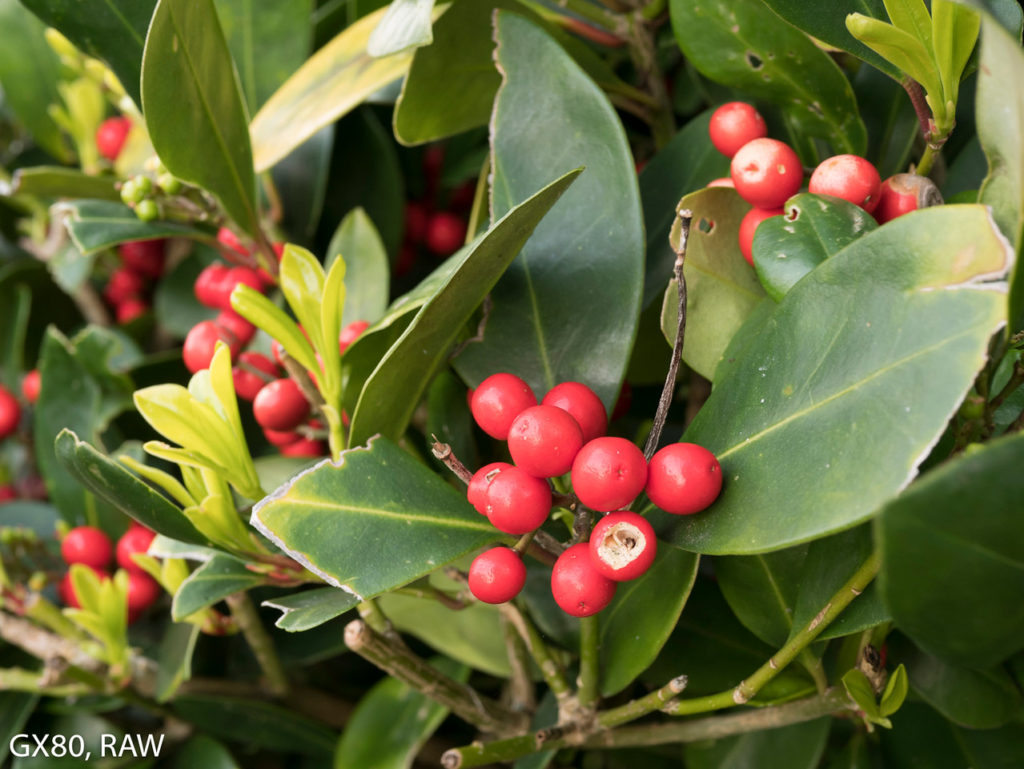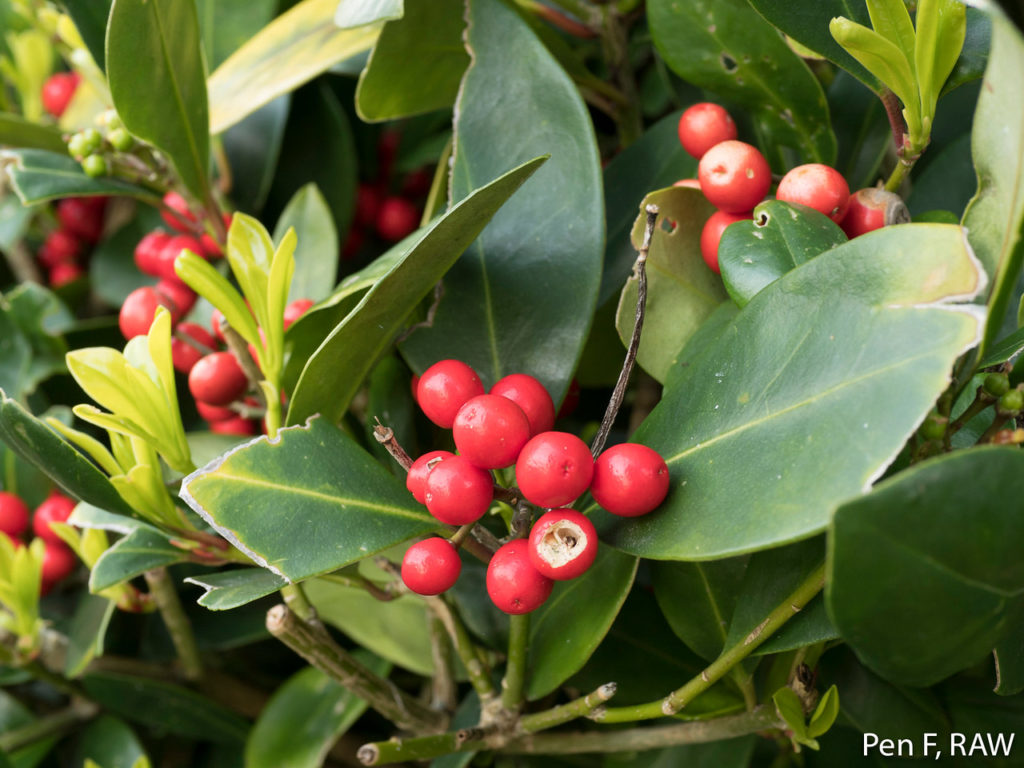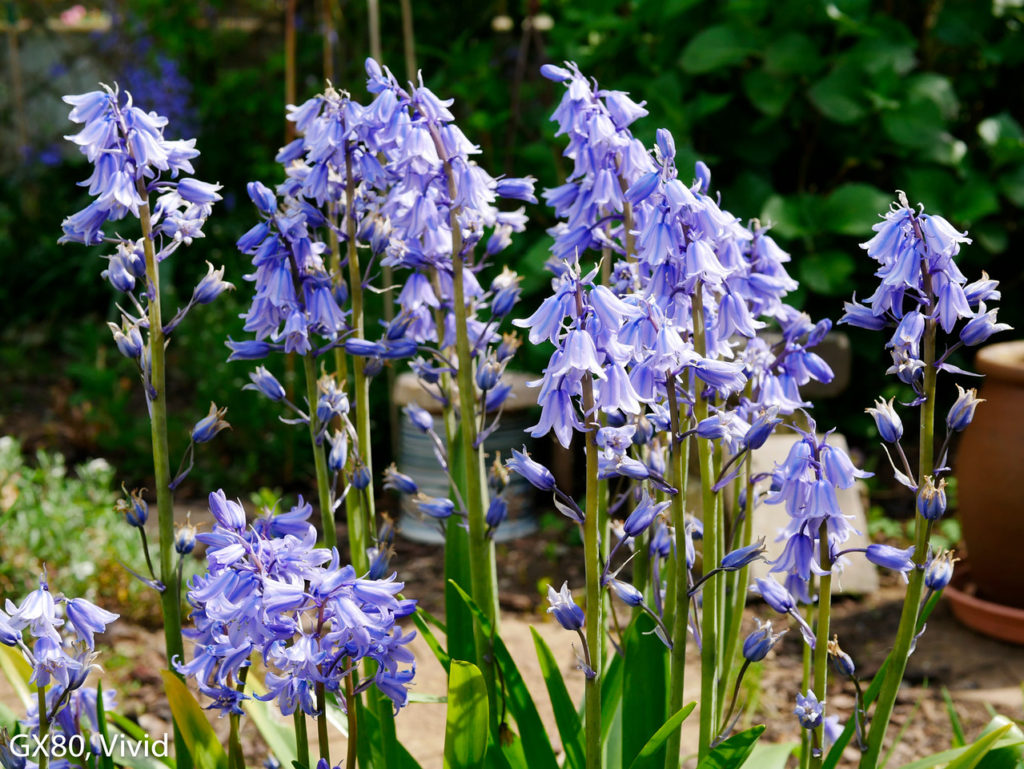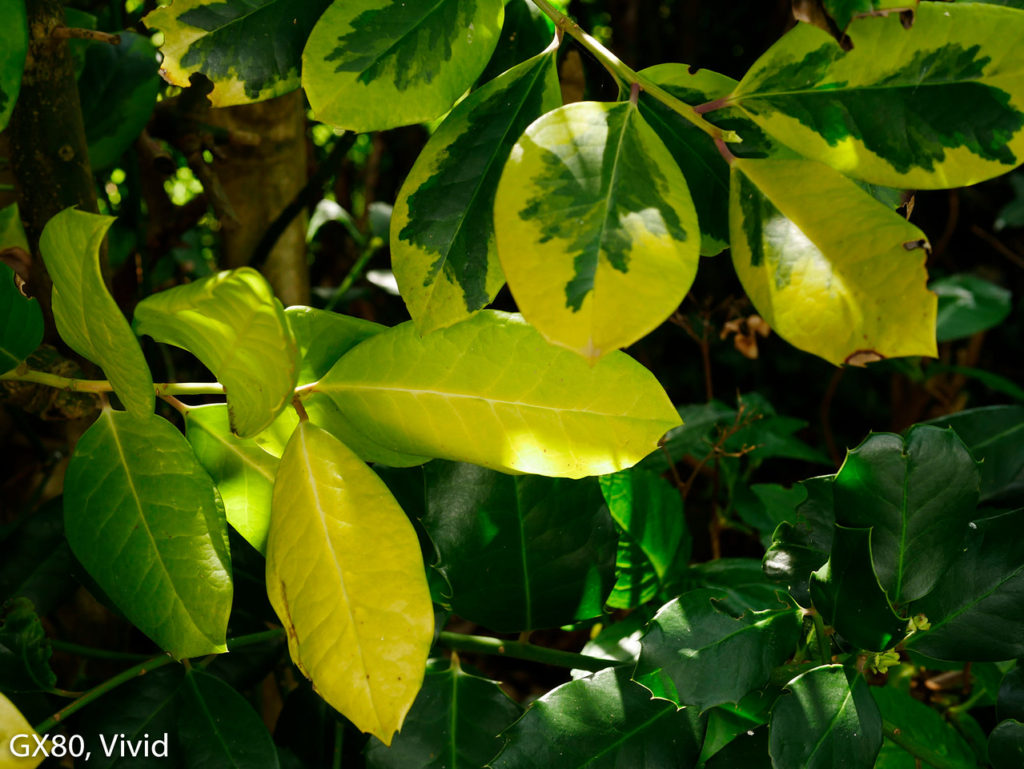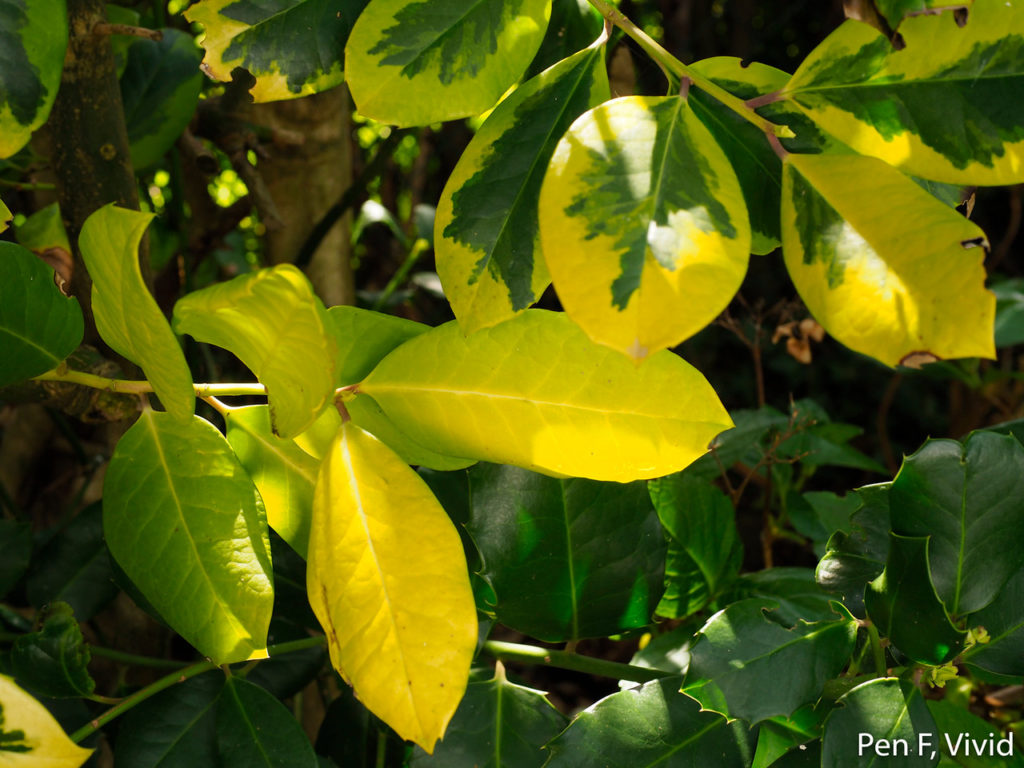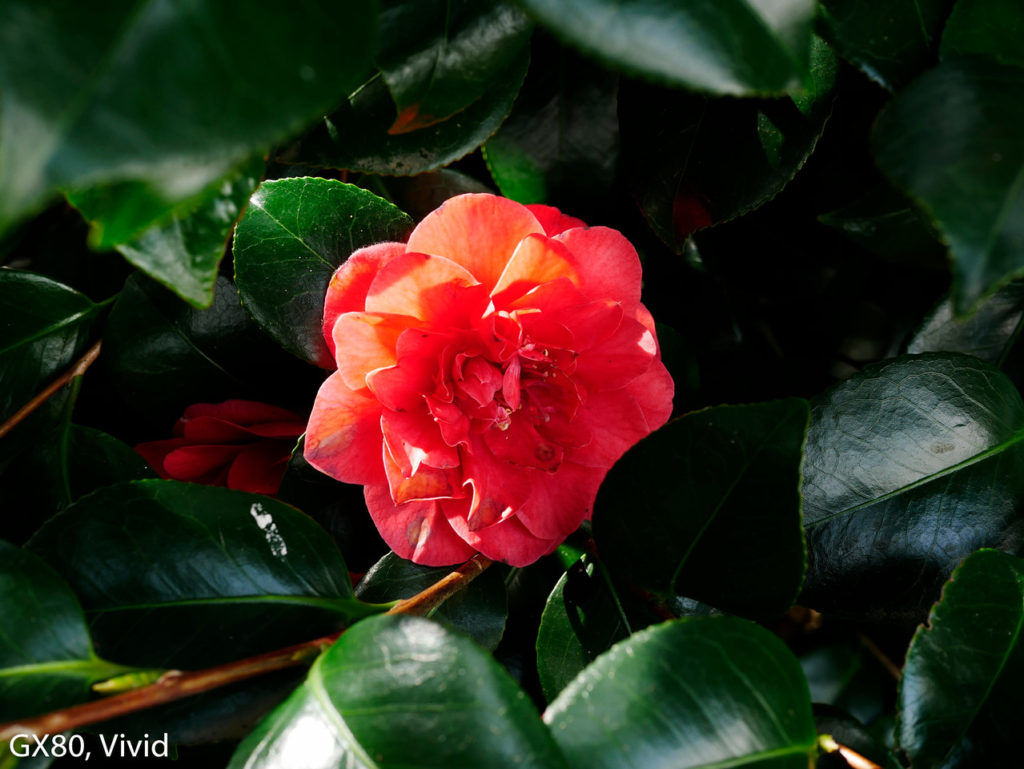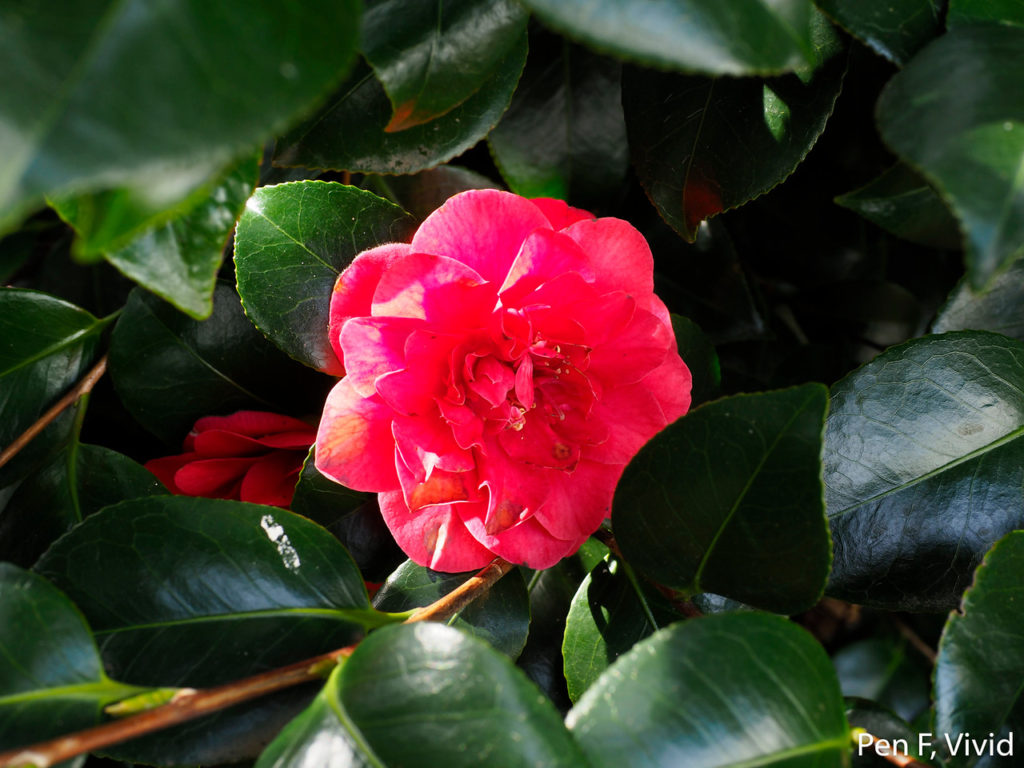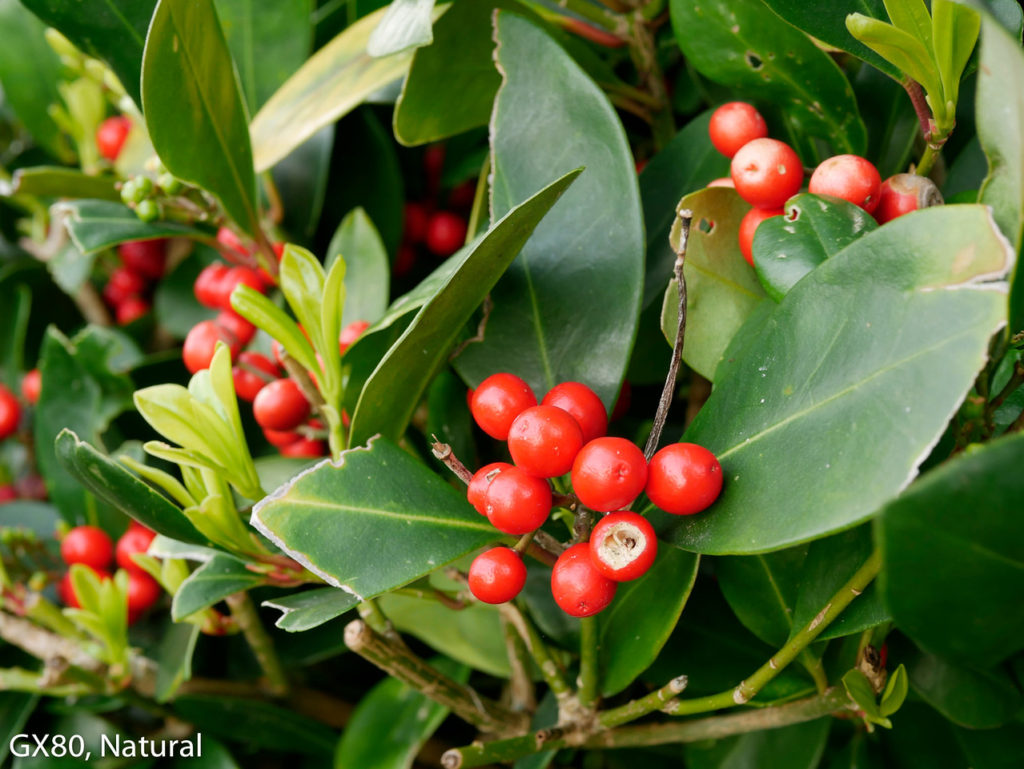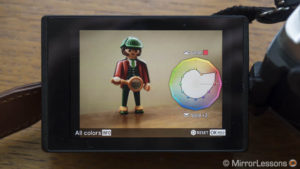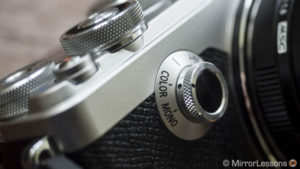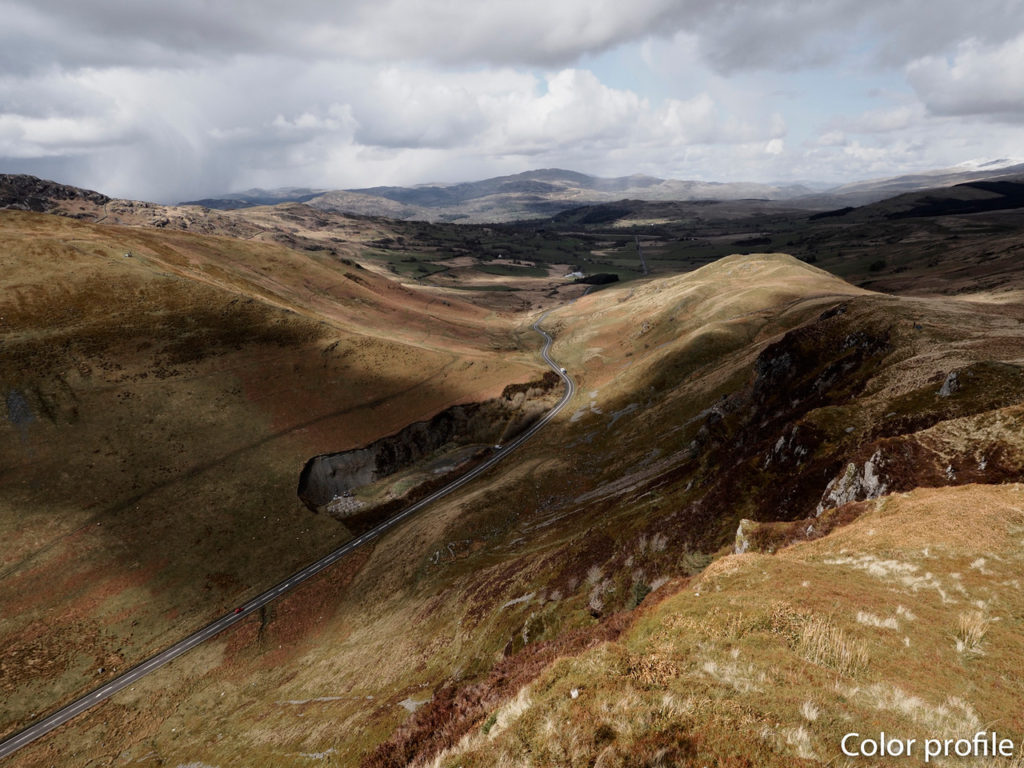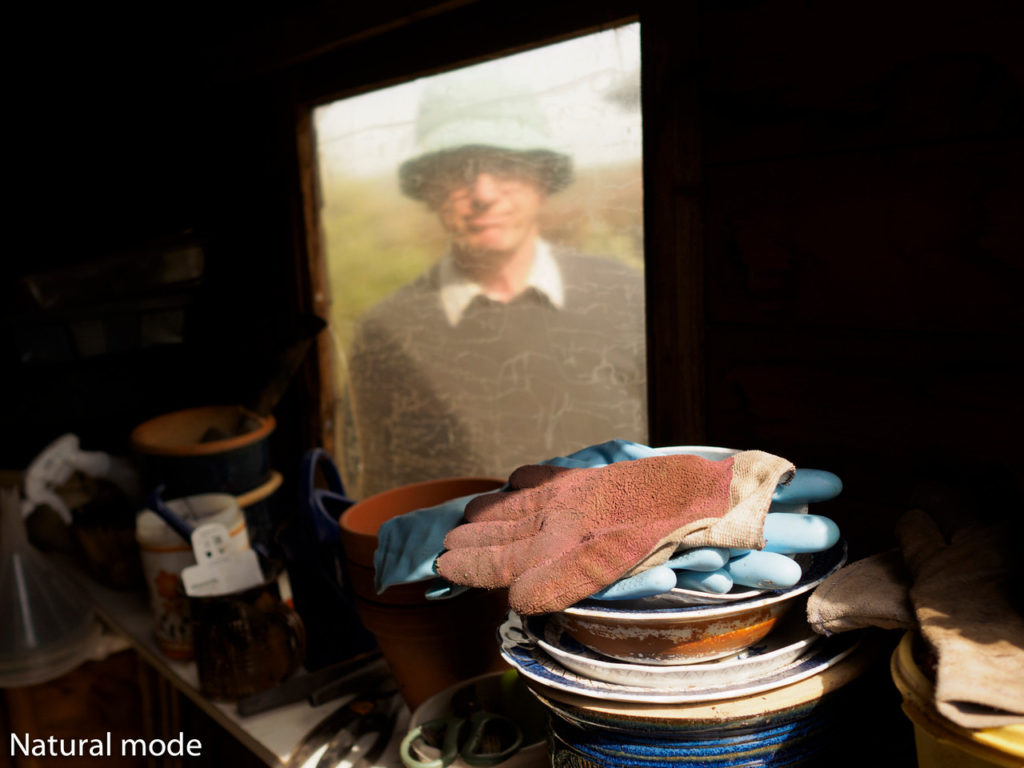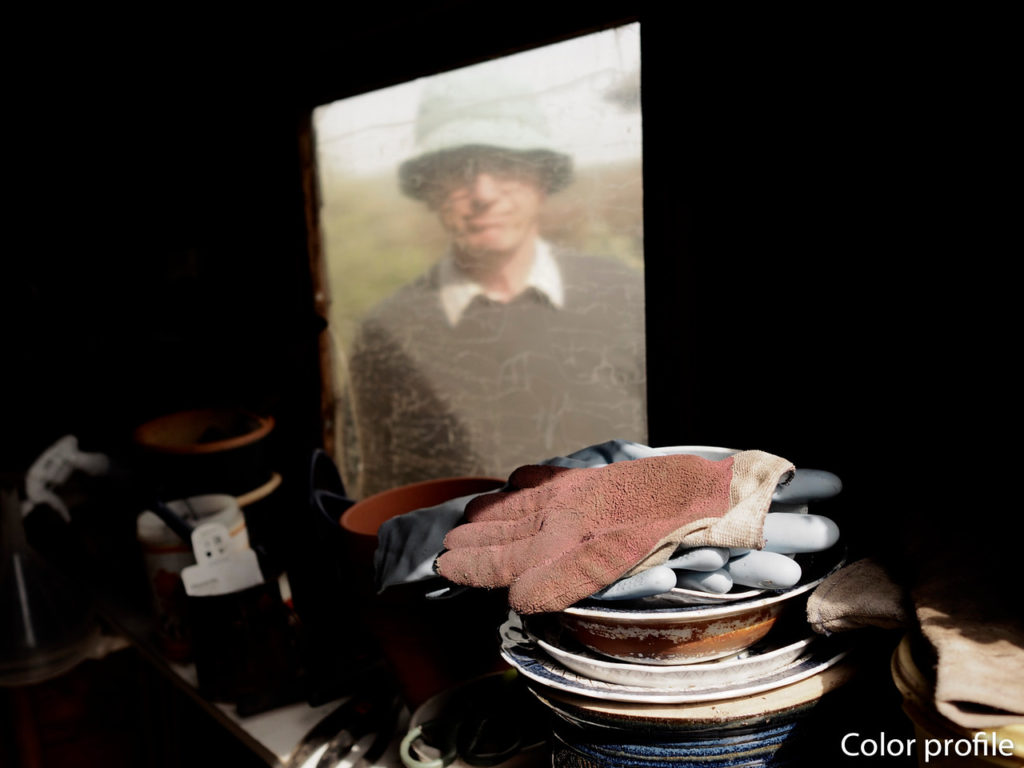A comparison you might be less likely to come across is the Panasonic Lumix GX85 versus the Olympus Pen F. After all, the price gap is significant and their respective designs suggest that Olympus and Panasonic are targeting different markets.
However it is also true that the two cameras have much in common. They feature the same Micro Four Thirds mount and their design incorporates a viewfinder on the left-hand side. The image quality is very similar and their 5-axis stabilisation technologies are the most advanced on the market at the time of writing.
So, are the price and design the only relevant differences? Let’s find out!
Note: The Panasonic GX85 is called the GX80 in Europe and the GX7 mark II in Asia. From now on, I will refer to it as the GX80.
[toc heading_levels=”2″]
Ethics statement: We were provided with a samples of the Pen F whereas the GX85 is part of our personal collection. We were not asked to write anything about the lenses, nor were we provided with any sort of compensation. Within the article, there are affiliate links. If you buy something after clicking the link, we will receive a small commission. To know more about our ethics, you can visit our full disclosure page. Thank you!
Main specs
GX80
- Sensor: 16 MP Live Mos
- Lens system: micro four thirds
- Weatherproof: None
- Internal Stabilisation: Yes (5 axis)
- Autofocus: DfD contrast detection AF with 49 areas
- Continuous shooting: 8 fps (w/o live view), 6 fps (with live view)
- ISO Sensitivity: 200 – 25600 ISO (Pull 100)
- Shutter Speeds: 1/4000 to 60 seconds, up to 1/16000s with electronic shutter
- Viewfinder: Field sequential LCD electronic viewfinder with 2.764k dots (equivalent), approx. 100% FOV coverage and 0.70x magnification
- Rear monitor: tilting touch sensitive 3″ LCD screen (1040k dots)
- Movie recording: 4K up to 30fps, Full HD up to 60fps
- Built-in Flash: Yes
- Extra Features: WiFi, Panorama, Timelapse, 4K Photo, Focus bracket
- Dimensions: 122 x 70.6 x 43.9mm
- Weight: 426g (including battery and memory card)
Pen F
- Sensor: 20 MP Live Mos
- Lens system: micro four thirds
- Weatherproof: None
- Internal Stabilisation: Yes (5 axis)
- Autofocus: Contrast detection AF with 81 areas
- Continuous shooting: 10 fps (S-AF), 5 fps (C-AF)
- ISO Sensitivity: 200 – 25600 ISO (Pull 100)
- Shutter Speeds: 1/8000 to 60 seconds, up to 1/16000s with electronic shutter
- Viewfinder: OLED electronic viewfinder with 2.360k dots, approx. 100% FOV coverage and 0.62x magnification
- Rear monitor: multi-angle touch sensitive 3″ LCD screen (1037k dots)
- Movie recording: Full HD up to 60fps
- Built-in Flash: None (external FL‑LM3 provided)
- Extra Features: WiFi, Time-lapse, Creative profiles, Focus bracketing, High Res Shot
- Dimensions: 124.8 x 72.1 x 37.3mm
- Weight: 427g (including battery and memory card)
Design and ease of use
If you look at pictures of the two cameras side-by-side, you would think that the Pen F is heavier because of its metal construction. However, in reality, they are about the same weight.
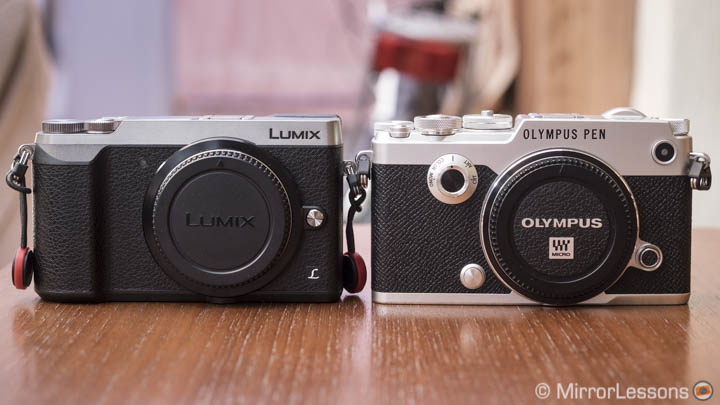
The Pen F is 427g while the GX80 is just 1g less according to the official specifications, including the battery and the memory card. You get the same impression when holding the two cameras in your hand. I guess that using aluminium and magnesium for the Olympus body helped to reduce the weight.
Because their electronic viewfinders don’t protrude from the top like cameras with an SLR-like design, their dimensions are quite similar. The Pen F is slightly larger but we are talking about not even 3mm.
With a compact zoom or a pancake prime lens, you can easily fit these two cameras inside a jacket pocket and you will always find a place for them in your bag.
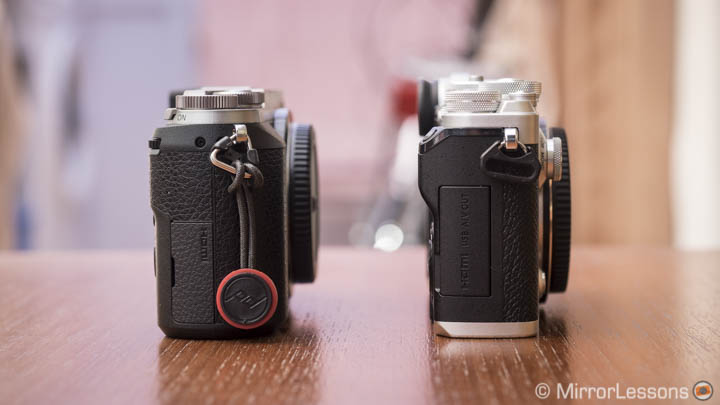
Neither camera is weather-sealed and this is where the similarities begin and end. Otherwise, the design and build of the two models is quite different.
The Pen F has an aluminium/magnesium alloy body with aluminium dials. The design has been carefully crafted with lots of attention to detail. Some buttons like the On/Off switch and the Creative dial are directly inspired by the original Pen F film camera. Another curious aspect is the lack of any visible screws on the body including in the bottom plate.
Undoubtedly the Pen F is a beautiful camera to see and hold.

The GX80 on the other hand is mostly plastic with metal dials and has a simpler design. It has a more prominent grip, however, which makes the camera more comfortable to hold with larger lenses. For the Pen F, you have to buy the optional ECG-4 grip. The Olympus camera has a larger and more comfortable thumb grip on the rear.
Concerning the ease of use, the GX80 has 4 physical custom buttons and 5 virtual function buttons you can access on the right side of the LCD screen. The Pen F has 9 physical custom buttons including a handy one on the front as well as additional dials: exposure compensation on top and a Creative dial on the front (more on this in the next chapter).
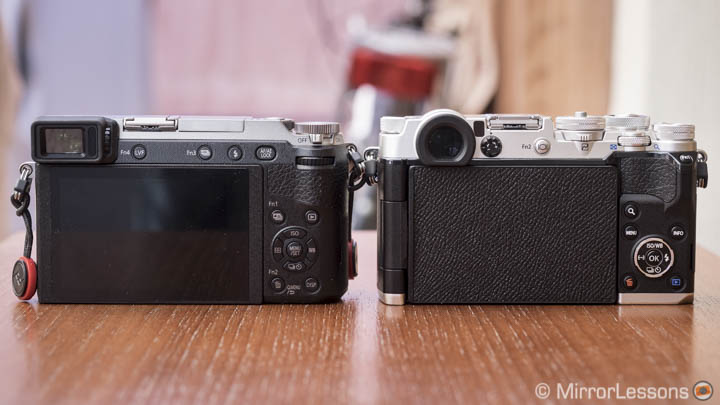
The GX80 has a more user-friendly interface through which you can navigate using various buttons or the touch screen. There is a bigger learning curve involved with the Olympus menu system, and you have to activate the hidden Custom menu to access all the settings.
EVF and LCD monitor
The two cameras feature a built-in EVF on the left. The viewfinders are based on different technologies but the real world experience with both is quite similar.
Let’s say that the positive aspects of the first compensate for the shortages of the second and vice versa.
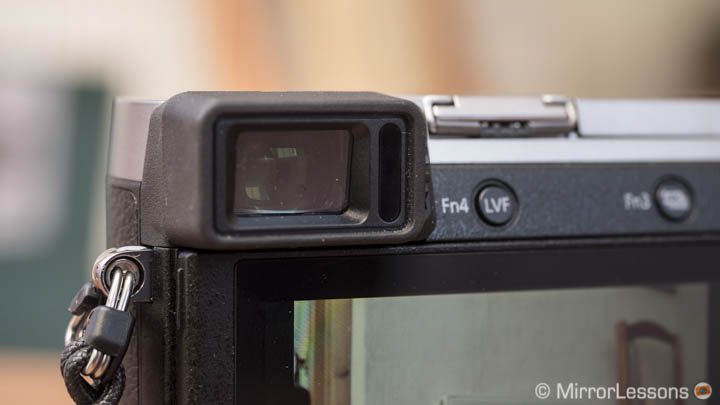
The GX80 viewfinder has a larger magnification of 0.70x and an eye point of 17.5mm. It uses a field sequential LCD panel with an equivalent resolution of 2,764k. While this number might seem positive at first, in reality it doesn’t correspond to a native resolution but to a combination of the red, blue and green pixels that are displayed one after the other. This gives the perception of more detail even if the native resolution is much lower (no official specifications are provided but I guess you can divide 2764 by 3).
Field sequential technology has one flaw: a “rainbow” effect that is noticeable when panning quickly in backlit scenes. Personally I don’t find it too much of a bother but other users may be more sensitive to it.
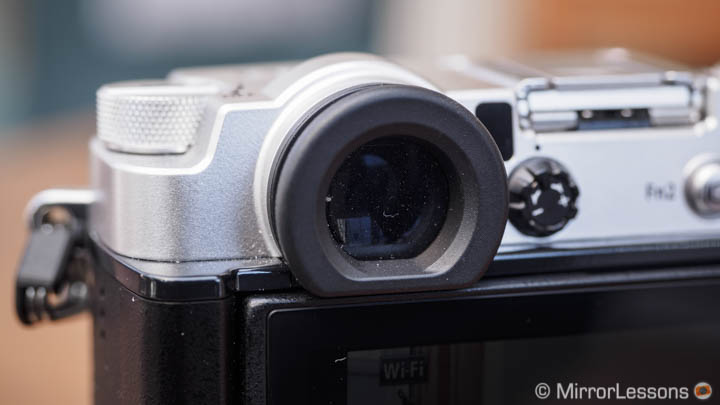
The Pen F has an OLED panel with a native resolution of 2.36 million dots. I found that the OLED technology provides a clearer and brighter image even though the viewfinder’s magnification is smaller (0.62x). The longer eye point (20mm) combined with the circular eyepiece makes the camera more comfortable to use when wearing glasses.
As for the LCD monitors, the resolution is basically identical and they are both touch sensitive. You can take a picture or change the focus point by simply touching the screen. The GX80 has a few extra options like moving the histogram or creating a custom AF group. The touch screen on both cameras can serve as a virtual AF pad to change the focus point while composing with the EVF. I find that it works a little more precisely on the GX80.
The only real difference concerning the rear monitor is that Pen F’s is a multi-angle screen and can be flipped to the side while the GX80’s screen can only be tilted up or down.
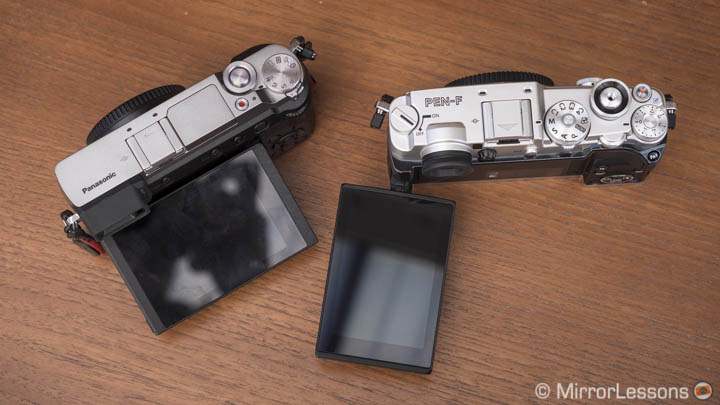
Personally I like the Panasonic solution for still shooting, while the multi-angle monitor can be more useful for video work. Since the Lumix camera has more advanced video capabilities, I almost feel that the two solutions should have been inverted.
Finally, the live view frame rate on the GX80 can be set to 30fps or 60fps. On the Olympus Pen F, you can choose between Normal and High for the frame rate. The High mode works at 120fps but the resolution decreases. Finally, there is an S-OVF option on the Olympus camera that simulates the optical viewfinder by not previewing white balance, exposure compensation and picture mode (colour profile).
Detail, dynamic range and sensitivity
Despite having different sensors and resolution, the image quality of both cameras is very similar.
The GX80 has a new 16MP sensor that lacks an AA filter (otherwise known as a Low Pass filter). Panasonic claims 10% additional sharpness in comparison to the previous 16MP sensor found on the GX7. The Pen F has a 20MP sensor that also lacks an AA filter. It is designed by Sony and is the same found on the Lumix GX8.
If we compare the amount of detail each camera is able to resolve with the same lens, we can see that the only real difference is the extra resolution from the Olympus Pen F. The difference between 16MP and 20MP is not huge and represents an increase of 20%. Perhaps the Pen F is a little more useful if you need to crop the image.

Pen F version here
Concerning dynamic range, once again the performance is very similar. If I flatten the RAW files as much as possible in Lightroom by opening shadows and blacks to the maximum and recovering all the possible highlights, we notice that the two sensors perform in a very similar manner. With the Pen F I was able to recover a little bit more highlights but there is slightly more colour noise because of the higher megapixel count. However, as soon as I apply some noise reduction, the results are identical.


Similar results are achieved at high ISO values up to 12800 ISO. Only at the maximum sensitivity do we notice that the Pen F produces more colour artefacts in the shadows in comparison to the GX80. Concerning the SOOC JPGs, the GX80’s noise reduction is more aggressive when set to 0 or +4. The Pen F retains more detail even with the option set to High.

Colours and monochrome profiles
If we compare the RAW files without any settings applied, unsurprisingly the results are identical with the standard Adobe profile.
Looking at the JPGs, there is more of a difference because each camera has its own set of colour profiles. Usually Panasonic cameras tend to have a cooler rendering while Olympus cameras generally have more vibrant and warmer colors. This time I was surprised to see that the GX80 gives warmer results in certain situations and deals with reds better. The Pen F has more vibrant yellows. If you leave the White Balance to Auto, the GX80 can produce a cooler rendering but you can customise the tint in the menu. The Pen F has the Keep Warm Colors option but it can produce less pleasant results in artificial light.
The Pen F has an additional ace up its sleeve: the new Creative dial allows you to access two new colour and monochrome profiles that are entirely customisable, allowing you to create personal colour profiles that reflect your style.
With the colour profile, you can vary the saturation of 12 colours individually or all together in 5 steps. You can also adjust shadows and highlights in 7 steps.
The monochrome profiles of the Pen F are some of the most beautiful B&W modes I’ve tested on a mirrorless camera.
You can choose between 8 colour filters and vary the strength of each of them in 3 steps. You can adjust shadows and highlights, and add vignetting and film grain.


These creative profiles require some trial and error at the beginning but can be quite satisfying to use once you’ve found and saved your preferred settings. The Creative dial also allows you to access Creative Control (varies saturations and tint) and the Art Filters.
Note that the creative profiles only work on the OOC JPGs but if you open the RAW file with the Olympus Viewer 3, you can load the exact settings used during your shoot and make additional changes.
On the GX80 you have the basic adjustments for contrast, saturation and sharpness as well as highlights and shadows. The camera introduces a new B&W profile called L.Monochrome that has more contrast in comparison to the previous profile but there is less customisation available in comparison to the Pen F.
Image stabilisation
Up until recently Olympus had been the main reference for effective in-body stabilisation. The GX80 is the first Panasonic camera that closes the gap with its direct competitor.
Both products have 5-axis sensor shift and are capable of combining sensor and optical stabilisation to push the boundaries of hand-held photography to the limit (Dual I.S. for Panasonic, Sync I.S. for Olympus). However there is a big difference: Panasonic has been integrating optical stabilisation into most of its lenses since the birth of the system, which means that the GX80 Dual I.S. system already works with 15 lenses (you can find a complete list here) and the number will likely increase in the future. Olympus, on the other hand, only has one lens with optical stabilisation: the 300mm f/4 Pro. As such, it is the only product you can currently use with Sync I.S. for the time being.
In our tests, we found that with a wide-angle lens, both cameras were able to take a sharp shot hand-held with a 1 second exposure and an near-perfect shot at 2 seconds, which is quite impressive. I wasn’t able to achieve these results without multiple attempts and I got a better keeper rate with the Pen F than with the Lumix camera. Either way, I would suggest using shutter speeds no slower than 1/2 of a second to increase your keeper rate significantly. It is also interesting to note that the GX80 and Pen F performed in a very similar manner when using a Lumix Dual I.S. lens, while the results were slightly inferior when using an Olympus lens on the Panasonic body. This means that the Dual I.S. system doesn’t bring a relevant advantage in this case.




With a telephoto lens, Dual I.S. starts to make a difference. I was able to bring home a sharp shot taken at almost 1 second with the 35-100mm f/2.8 set at 100mm (200mm in full frame terms). With a non Dual I.S. compatible lens, the GX80 still managed to take a sharp shot down to 1/4s, which is the same result I obtained with the Pen F.



I couldn’t test the Pen F with the 300mm Pro but I reviewed it on the E-M1 which is also compatible with Sync IS. The slowest shutter speed I was able to use was 1/3s which is quite impressive considering that the angle of view is much narrower than 100mm and that the lens is larger and heavier. My impression is that Dual I.S. and Sync I.S. have very similar capabilities. The lack of OIS lenses from Olympus is the only real flaw and unfortunately a Lumix OIS lens won’t be compatible with Sync IS on the Pen F.
For video, the performance is similar. Both cameras do very well for static shots but the GX80 can produce jerky footage when panning with a Dual I.S. lens. Both can produce distortion (or jello effect) and sudden sideway shifts when performing more complex movements. The Pen F is a little more stable but is also more prone to distortion than the GX80. Finally they both have an electronic stabilisation option that you can choose in addition to the hardware shift.
Below you can watch two videos: the first is our in-depth image stabilisation comparison between the two cameras (comparison for video starts at minute).
The second video shows what the Olympus Sync I.S. can do for video. I used the E-M1 whose 5-axis shift technology is older than one found on the Pen F. This means that theoretically, the Pen F could do even better than this.
Autofocus, manual focus and continuous shooting
Both cameras use a contrast detection AF system. The Pen F has 81 AF points while the GX80 has 49 points and employs the Depth from Defocus technology that Panasonic introduced with the GH4. The camera predicts the correct focus point by analysing two images with different depths of field in a matter of milliseconds.
The Pen F as well as other OM-D cameras have been criticised more than once for their slow AF performance in continuous mode. The fact that the GX80 uses a more advanced system would suggest it works better but once again, real life shooting proved otherwise.
In most situations involving Single-AF, both cameras perform in a similar way. The GX80 can be slightly faster at locking onto the target and in low light, while the Pen F has the tendency to hunt more. Both cameras have face and eye detection capabilities but they aren’t 100% reliable.
In continuous mode, the DfD technology gives a slight advantage to the GX80 but the difference is smaller than you’d think. Following multiple tests we ran at different sport events, we found that the Pen F gave us a keeper rate of approximately 60% while the GX80 was closer to 65%. The main difference we found is that the Pen F performs better with the 9 area target mode. The GX80’s performance is more or less identical with the Multi area and the AF Tracking mode.


An important thing to keep in mind is the following: the Pen F does well with both Lumix and Olympus lenses as long as their AF motor is fast, which is the case for many Micro Four Thirds lenses. The GX80’s DfD technology is only compatible with Lumix lenses. Furthermore, some Lumix lenses have an additional compatibility with the 240fps AF speed.
The GX80’s AF performance will vary depending on the lens used, and the performance with an Olympus lens will be less reliable than with a Lumix lens.


The B&W pictures are out of focus, the sepia’s are slightly soft.


When it comes to manual focus, both cameras have magnification and peaking option. You can choose various magnification levels and several colours for peaking (5 for the GX80, 4 for the Pen F). One thing I appreciated about the GX80 is that you can combine magnification and peaking together in just one portion of the frame rather than magnify the entire image. On the Pen F you can choose to reduce the brightness of the image and vary the highlight intensity to see the peaking contours better.
The GX80 can shoot up to 8fps with continuous autofocus but without live view which means the EVF or LCD screen shows you the last picture taken in the sequence. If you downgrade to 6fps or 3fps, live view is available with blackouts. You also have the option of a 40fps mode with the electronic shutter at a reduced 2MP size and in JPG only.
The Pen F has a continuous shooting speed of 10fps and 11fps with the electronic shutter but the focus is locked at the first frame. Live view is disabled and the last picture taken is displayed instead. If you want continuous AF and live view (with blackouts), you need to select the slower speed of 5fps.
The GX80 is also superior in terms of buffer memory: you can shoot RAW + JPG at 8fps for 8s straight before the camera slows down. By selecting JPG only, the camera keeps shooting and never slows down. The Pen F is only able to match the performance of the GX80 with JPG + 5fps.
Video capabilities
As usual when we compare Olympus and Panasonic cameras, one of the main differences is found in the video department.
The GX80 can record in 4K up to 30fps with full pixel readout. In Full HD it goes up to 60fps but cannot do slow motion in-camera and the footage is not as good as the 4K version (more aliasing and moiré). The quality is excellent and low light performance is good up to 3200 ISO (the maximum output is 6400).
The Panasonic camera is packed with lots of extra features including stop motion, time-lapse and 4K live cropping that creates a digital panning or zooming movement in-camera.
Among the things it lacks are dedicated picture profiles for video and a microphone input.
The Pen F can shoot up to 60fps in Full HD with basic video functionalities and manual exposure control. There is a slow motion mode that conforms the 50 or 60fps footage to 24 or 25fps in-camera. The quality is good and like the E-M5 II before it, it is a good improvement over previous Olympus cameras but the competition from Sony and Panasonic is still superior.
One annoying thing is that you can’t change the aperture or shutter speed once you hit the record button. It lacks a mic input as well.
Extra features
The Pen F and GX80 are packed with lots of extra features but most of them are unique to each camera. Let’s start with the most interesting.
The GX80 has lots of 4K Photo modes that are directly connected to 4K video. You can save any video frame as an 8MP JPG and you can also choose various aspect ratios instead of the default 16:9 in video mode. 4K burst allows you to shoot at 30fps while Post Focus lets you select the focus point after taking the shot. The Light Composition mode allows you to merge various frames of a 4K clip while saving only the brighter pixels, which is useful for light painting. However, being an 8MP image extracted from a compressed video file, the quality is not as good as a full-sized JPG or RAW file.

The Pen F features live time, that gives you a real-time preview of your long exposure, and live composite. The latter, unlike the GX80 version, allows you to save a full-sized RAW files. Plus you are not limited to a minimum shutter speed of 1/2s and can benefit from the real high ISO performance of the sensor which is good for star trail shots.

The High Res Shot mode on the Pen F takes 8 pictures while slightly shifting the sensor by half a pixel between each shot and combines them into a 50MP (JPG) or 80MP (RAW) image. Given its nature, it works well if you’re on a tripod without any movement in your composition. The result is excellent with a better colour rendition than what a single RAW file provides: the camera collects more colour data because each point of the image is captured by each of the blue, red and green pixels.

One feature the two cameras share is also one of the most useful: a focus bracketing mode that can be very interesting for macro photographers.
Often a single shot doesn’t give you enough depth of field, even when you set the aperture to f/8 or f/11. By merging several shots taken at different focus distances (focus stacking), you can increase the depth of field. This technique has been around for a while but it is usually performed manually, which requires time and patience. The GX80 and Pen F can do this automatically by varying the focus point while shooting in burst mode, resulting in a much quicker and more efficient process. Neither will stack the image in-camera so you have to do it in post-production with a dedicated software.
On the Pen F you can take up to 999 shots and set a focus differential from 1 to 10. The lower the number, the shorter the distance will be between frames. Likewise, the higher the number, the larger the difference will be between one shot and the other.

20 shots stacked in Photoshop
On the GX80, you can also record up to 999 shots but the focus differential only has 5 steps.
The order in which the photos are taken is also different. On the Pen F you have to start from the shortest focus distance, as the camera will then work its way back. The GX80, on the other hand, will take half of the shots in front of and half behind the focus point you set.

10 shots, 5 steps
The Pen F uses the electronic shutter in this mode which allows you to shoot at 11fps. However this can also introduce rolling shutter. In contrast, the GX80 uses the mechanical shutter.
Other interesting features in a nutshell:
- Shutter: the GX80 mechanical shutter has a maximum speed of 1/4000s versus 1/8000s for the Pen F. Both cameras have an electronic shutter option that increases the speed to 1/16000s. The latter also allows for silent shooting. The Pen F has a first electronic curtain mode called Anti-Shock to reduce shutter shock. The GX80 doesn’t have that option but features a newly developed mechanical shutter with an electromagnetic drive. I haven’t experienced any with either product.
- Flash: the Lumix camera has a built-in flash but won’t control other units wirelessly. You need to buy the optional FL200L in order to do that. The Pen F doesn’t have a built-in flash but the small FL‑LM3 is provided and can control other units via the RC mode.
- Wifi: both cameras have wireless capabilities (Wifi but not NFC) including remote control, playback and image transfer (JPG only). Both apps are available for Android and OIS with the Lumix version having more options.
- Bracketing: in addition to focus bracketing, you get AE bracketing (up to 7 images and 1Ev of difference) and aperture bracketing on the GX80. The Pen F has AE and HDR bracketing (up to 7 frames and 2 Ev of difference), White Balance, Flash, ISO and Art filters.
- Multiple exposure: up to 4 shots with the GX80 and only two with the Pen F.
- Panorama: available in-camera with the GX80 while you need the Olympus Viewer 3 software to merge the shots taken with the Pen F.
- Internal RAW processing: available on both cameras.
- Time-lapse: available on both, you can save a 4K video as a result but it is limited to 5fps on the Pen F.
Battery life
I find the battery life worse on the Pen F. Even without shooting video or in continuous mode, it drains quickly and can require more than two batteries for a day of shooting.
The GX80 performs better and you can get through the day with one battery and approximately 350 shots. It will drain more quickly if you record 4K video or shoot in burst mode but even then, I found that it lasted longer than the Olympus camera. For extensive shooting, a spare battery is advised.
As a final note, the GX80 can be charged via USB (the battery charger is not provided, only the USB cable and power socket). The Pen F can’t be charged via USB.
Price
The final and perhaps most important difference between these two cameras is the price.
The GX80 is currently one of the best deals you can find. For approximately $800 with the kit lens, you get excellent IQ, stabilisation, 4K video and lots of extra features.
We can label the Pen F as premium camera. Because of its appearance and high-end build quality, you can find it at $400 more without any lens included.
Conclusion
There are as many differences as there are similarities between these two cameras. They almost feel like polar opposites of what a Micro Four thirds camera can be nowadays: a less expensive solution that doesn’t sacrifice performance or a beautifully crafted object that also delivers lots of substance.
In the end, you can achieve the same results with one or the other, with the exception of the video capabilities (4K vs Full HD) and some specific features such as Live Composite or Creative profiles. Image quality and stabilisation are very similar – both are among the best you can find right now in the Micro Four Thirds range.
The price difference will be a decisive factor for many. In my personal experience, I felt more connected to the Pen F. As I stated in my full review on MirrorLessons, it is a camera with “personality”: you enjoy using it as much as you enjoy looking at it. Something else that won me over were the beautiful monochrome profiles.
The GX80 is of course the best bang for the buck and I am very pleased that Panasonic released an upgrade that costs less while remaining extremely feature-rich. At the time of writing, there is no other rival that can match its capabilities at the same price point.
Choose the Panasonic GX80 if:
- You are on a budget
- You want 4K video and can make use of 4K Photo as well
- You need a faster continuous shooting speed and a better buffer
Choose the Olympus Pen F if:
- You like a premium design that also feels great in the hand
- You like excellent black and white results in-camera
- You can take advantage of unique features such as High Res Shot or Live Composite
Check price of the Lumix GX85 / GX80 on
Amazon | Amazon UK | eBay | B&H Photo
Check price of the Olympus Pen F on
Amazon | Amazon UK | B&H Photo | eBay
Second-hand Panasonic cameras on
Second-hand Olympus cameras on
Sample Images
GX85 / GX80





Pen F











